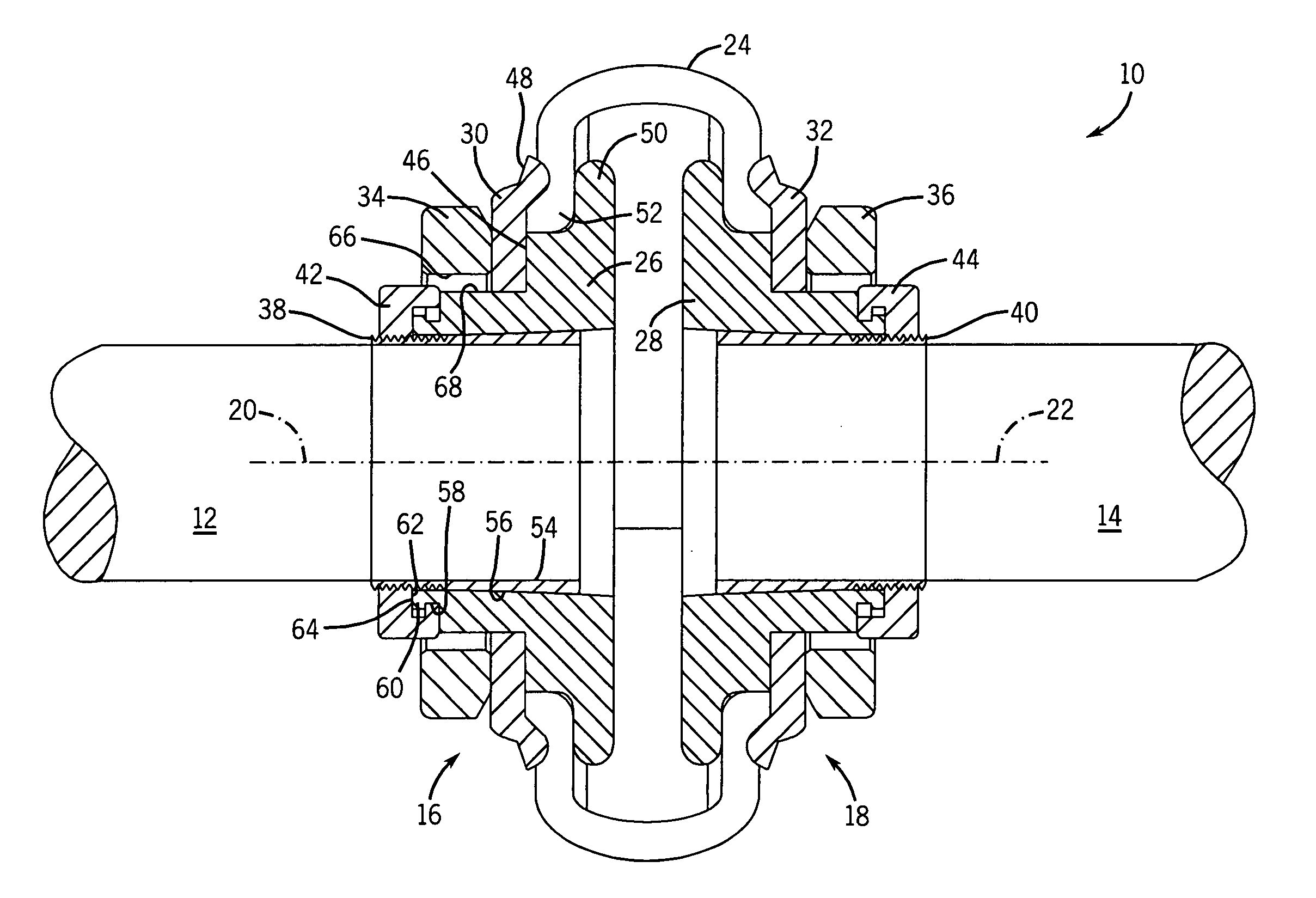Shaft coupling system and method
- Summary
- Abstract
- Description
- Claims
- Application Information
AI Technical Summary
Benefits of technology
Problems solved by technology
Method used
Image
Examples
Embodiment Construction
[0020] In general, the present technique provides for the mounting of structures, such as hub assemblies and other hollow members, onto mechanical elements (e.g., shafts) to secure the mechanical elements to one another. For example, FIG. 1 illustrates a coupling system, designated generally by the reference numeral 10, for coupling a first shaft 12 to a second shaft 14. An example of the first shaft 12 is an output shaft from an electric motor, and an example of the second shaft 14 is an input shaft of a driven machine, such as a foot-mounted pump. It should be emphasized that while reference is made to a prime mover in the form of an electric motor and to a driven machine in the form of a pump, the coupling system described herein is not limited to application with any particular type of prime mover or driven machine. In particular, the coupling system can be applied to a wide range of input power sources, such as internal combustion engines, hydraulic motors, jack shafts coupled ...
PUM
 Login to View More
Login to View More Abstract
Description
Claims
Application Information
 Login to View More
Login to View More - R&D
- Intellectual Property
- Life Sciences
- Materials
- Tech Scout
- Unparalleled Data Quality
- Higher Quality Content
- 60% Fewer Hallucinations
Browse by: Latest US Patents, China's latest patents, Technical Efficacy Thesaurus, Application Domain, Technology Topic, Popular Technical Reports.
© 2025 PatSnap. All rights reserved.Legal|Privacy policy|Modern Slavery Act Transparency Statement|Sitemap|About US| Contact US: help@patsnap.com



